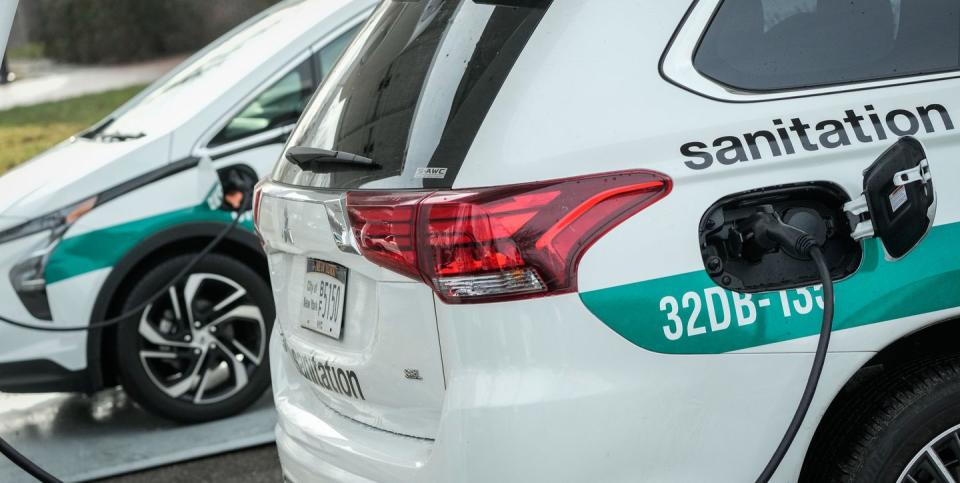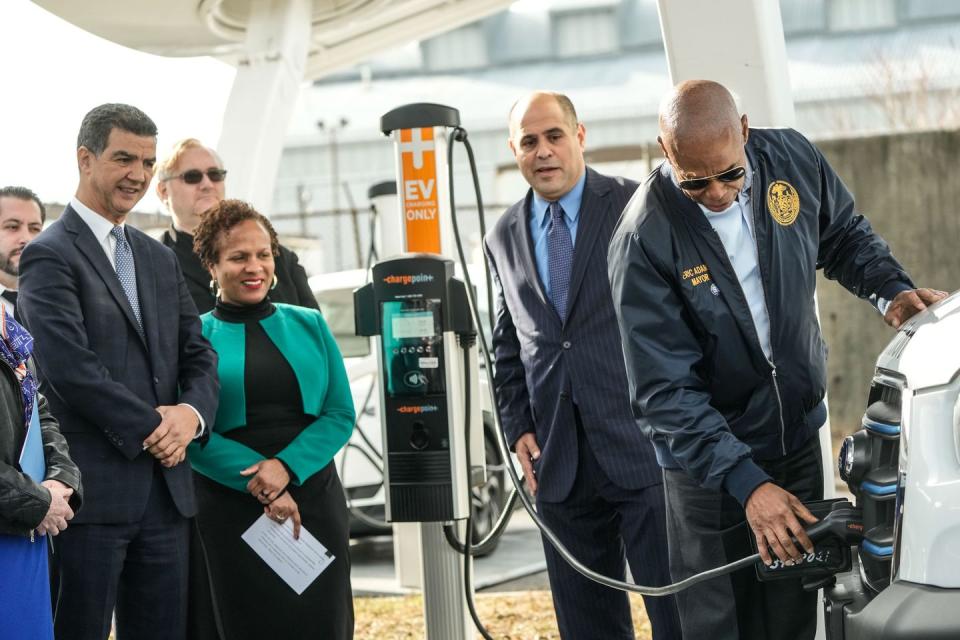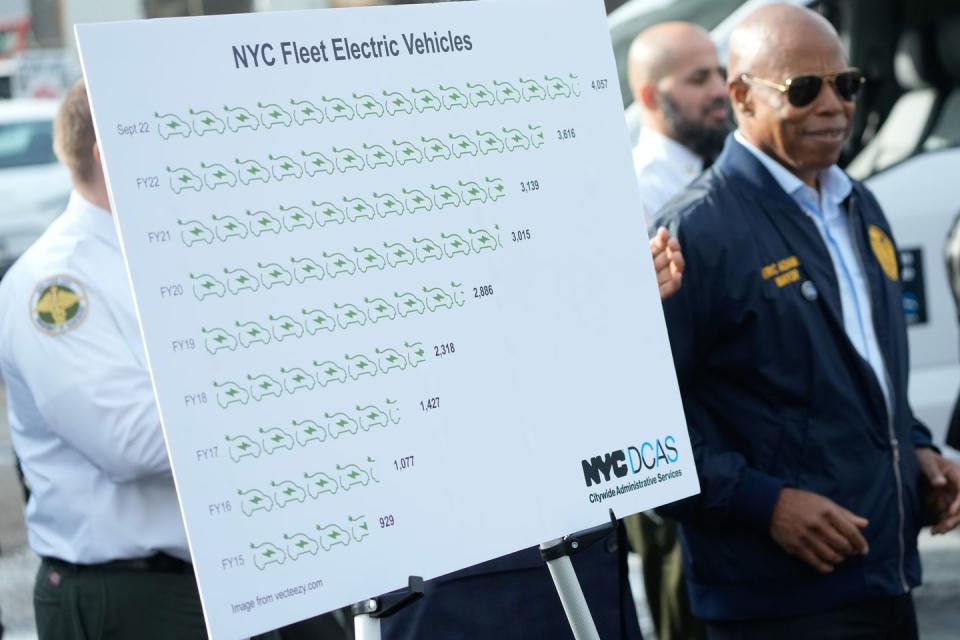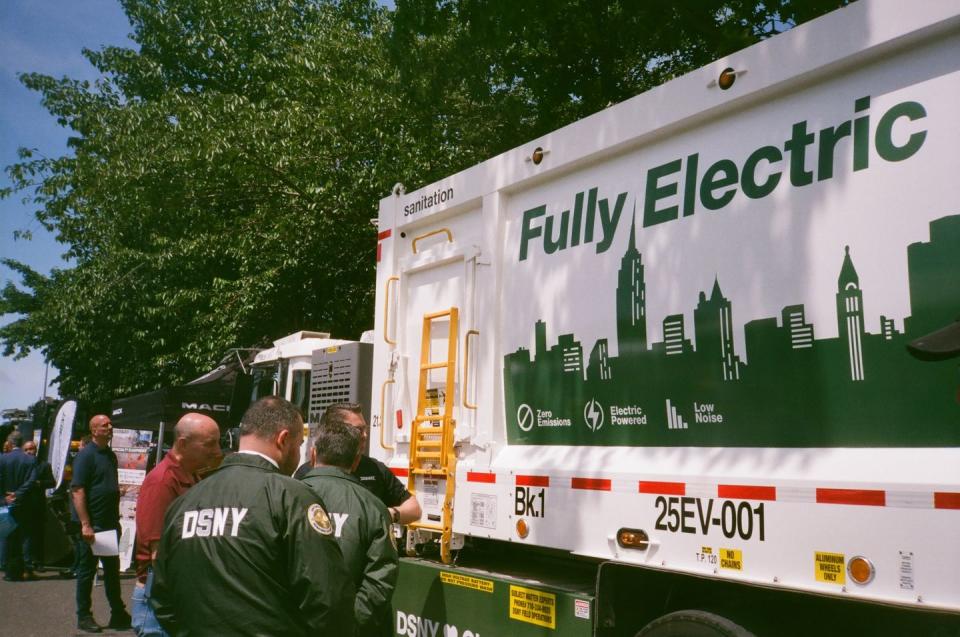This Metropolis Adds over 900 Electric Fleet Vehicles, 315 Chargers

New York City is set to add over 900 electric vehicles to its current stable of more than 4000 EVs, as the city aims for an all-electric fleet by 2035.
Hundreds of Chevrolet Bolts, Ford E-Transits, and F-150 Lightnings, as well as a number of plug-in hybrid street sweepers and other electrified heavy-duty commercial vehicles, will replace existing ICE units.
Federal funding from the Congestion Mitigation and Air Quality Improvement Program will inject the city's clean air project with $10.1 million, divided across various agencies.
After committing to operating an all-electric fleet by 2035, New York City appears to be on track to reach its goal, at least so far. Having already met its 2025 goal of transitioning 4000 internal-combustion fleet units, the city is ahead of schedule.
And now, thanks to a $10.1 million grant from the US Department of Transportation, an additional 925 electric fleet vehicles are on the way.
Phasing out 925 of its internal-combustion fleet vehicles, the grant money will allow the city to procure 382 Chevrolet Bolts, 360 Ford E-Transit vans, and 150 Ford F-150 Lightning pickup trucks. Additionally, a portion of the funds will be earmarked to order 25 plug-in US Hybrid street sweepers and seven Mack LR BEV garbage trucks.

While the funding is split into two sections—$6.2 million allocated to the Department of Citywide Administrative Services and the other $3.9 million disbursed to the Department of Sanitation—New York City Department of Transportation chief Ydanis Rodriguez confirmed the new EVs will be spread across the city's fleet operation.
But how exactly did NYC get this monetary windfall from the federal government? The answer actually dates back to 1990, when the federal Clean Air Act Amendment was passed and the Congestion Mitigation and Air Quality Improvement program was authorized alongside.
The initial goal of the CMAQ program was to provide funding for ground transportation projects that allow for cleaner air and reduced congestion, and the program had allocated over $30 billion by 2015. Since 2015, the implementation of the FAST-ACT in conjunction with CMAQ has accounted for $2.3-$2.5 billion in project funding each year, and the city of New York has already received its slice for 2023.

In addition to the light and medium-duty electric fleet additions, the funding will be used to expand the city's fleet charging network. The total number of charging ports available to city fleet vehicles is set to rise above its current level of 1300, as a confirmed 315 additional chargers are on the way.
The city expects to roll out an additional 600 charging ports within the next 18 months, though it's unclear if these ports will be part of the public access pilot program. Press materials from the city did not clarify what level either batch of chargers would be.
Currently, the EV fleet in New York City is the largest in the country, and it includes a wide variety of models from the NYPD's Ford Mustang Mach-E to electric Mack Truck Garbage units. With the new additions, the city's fleet is excepted to grow to 5000 units strong by June of this year.

The next step, Deputy Commissioner Keith Kerman says, is to electrify its medium- and heavy-duty fleet. With these vehicles accounting for 25% of the city's fleet, Kerman says the federal funding will also go toward cleaning up the city's commercial fleet. That process has already started with three electric buses for the Department of Correction. Additionally, the city is in ongoing contract negotiations for Department of Parks and Recreation branded electric box trucks, meaning the influx of heavy-duty fleet EVs won't slow anytime soon.
But there are complications. The new electric Mack Truck Garbage units have already shown signs of weakness in snowy weather, lasting a mere four hours of snow plowing before needing to recharge. The traditional ICE versions usually run for 12 hours at a time during snow storms.
From a lack of DC fast chargers to inadequate inclement weather performance and long pilot program periods, the full implementation of electric fleet vehicles in New York's tougher roles is still a ways out. Even so, the lessons learned from New York's early adoption and testing regiment will likely help guide EV fleet conversions nationwide.
Should more cities add EVs to their fleets? Will EVs work as fleet vehicles in rural municipalities? Please comment below.

 Yahoo Autos
Yahoo Autos 